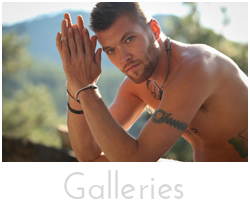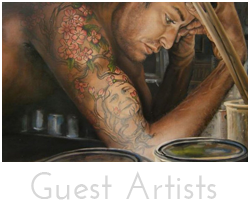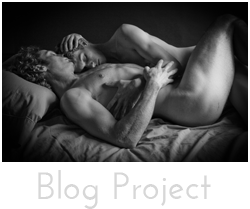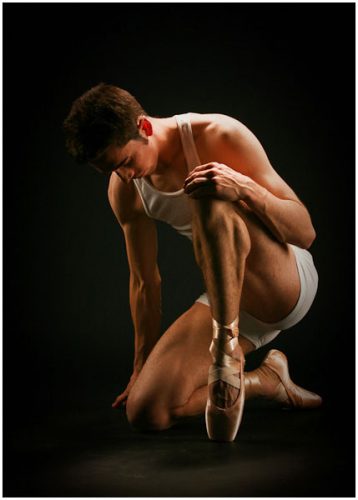 I have been working through 16GB of dance images the last couple of days. One of my contracts is with the University of Montana to photograph their Drama/Dance School productions. And dance is certainly the biggest event of the season. Typically after the show we have a photo call and create archive images of the production to be used as promotional materials for the University. But most of all, for portfolio reviews of the students that create these shows. This year the department happens to have the final play of the season Fuddy Meers and eight dance pieces all going on the same week. I spent three nights last week shooting these images. Since the semester is trying to wrap up and the students do their final portfolio reviews for the school year, there is always a rush this time of year to get the images back to them. Then going out of town last weekend with Bill’s show, it’s been a mad dash the past 24 hours to get all these images done and turned in this morning.
I have been working through 16GB of dance images the last couple of days. One of my contracts is with the University of Montana to photograph their Drama/Dance School productions. And dance is certainly the biggest event of the season. Typically after the show we have a photo call and create archive images of the production to be used as promotional materials for the University. But most of all, for portfolio reviews of the students that create these shows. This year the department happens to have the final play of the season Fuddy Meers and eight dance pieces all going on the same week. I spent three nights last week shooting these images. Since the semester is trying to wrap up and the students do their final portfolio reviews for the school year, there is always a rush this time of year to get the images back to them. Then going out of town last weekend with Bill’s show, it’s been a mad dash the past 24 hours to get all these images done and turned in this morning.
I began shooting theater and dance from the beginning of my career in photography. A teacher told me when I began photography to shoot what you know; this is certainly what I know and I love it. I think it’s something that I am particularly good at. Typically when I go into one of these types of shoots I am able to direct the action and scene to get the most action out of the images. The job is to tell a story with each image and get to the core of what that action entails. Often times the directors will choose scenes that are the emotional climax of the play, which do not necessarily make very interesting images. What creates great images is movement, gesture, expression, and showing the positional relationship between the actors.
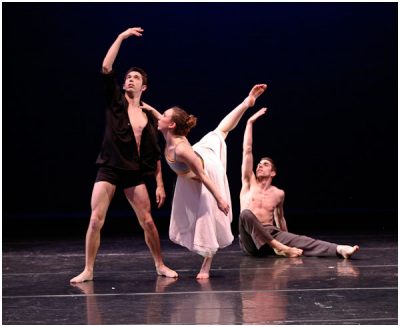 Dance is one of the hardest subjects to capture and seems to take a lot more time and a quick impulse. I used to go out to photograph sporting events, especially wrestling, to practice on seeing and responding to the moments as they arise. In a sense wrestling has a very dance like quality of movement and composition, thought most wrestlers will probably disagree. When I approach sports it’s purely from a artistic point of view. When I first began shooting dance I used film, which was sometimes near impossible. It seems that the lighting designers here at this university design their dance pieces to be in near darkness, and then the dancers typically wear dark clothing or blacks, with rapid movement. Photographically this is very difficult to capture. Back then you had to rely on film speed which was 400 ISO, which you could push to 800, but would sacrifice quality. There was generally only about a 4 stop latitude the chrome films could capture, so you were having to choose which end of the darks or whites you would compromise. Plus film was very expensive and about half the images were no good. Nowadays digital has made this line of work a breeze. As long as you have a high enough grade camera that can respond to your impulse shooting in dark places. This is where the shutter speed comes into play in the exposure ratio that has been the on going discussion of these blogs. You must be totally concerned that you are shooting no less then 1/200 to capture dance in motion, and still sometimes that even becomes iffy. The stop range latitude has greatly expanded for what digital can capture and I can typically shoot many events live as they unfold on a monopod hand held from the house. But when you get great dance images, they are truly beautiful. I have been shooting these types of images for over a decade now and love this type of work. In fact I probably have about 2 to 1 live entertainment images over all other images in my catalogs. In fact I have a separate hard drive devoted just to maintaining this archive. Dance also seems to require a lot more post processing and cropping to refine my own sense of balance in the image because it’s in constant motion when you shoot. Besides, it puts me back into the theater space where I feel comfortable and belong. I still feel at home in that world clicking away in the dark.
Dance is one of the hardest subjects to capture and seems to take a lot more time and a quick impulse. I used to go out to photograph sporting events, especially wrestling, to practice on seeing and responding to the moments as they arise. In a sense wrestling has a very dance like quality of movement and composition, thought most wrestlers will probably disagree. When I approach sports it’s purely from a artistic point of view. When I first began shooting dance I used film, which was sometimes near impossible. It seems that the lighting designers here at this university design their dance pieces to be in near darkness, and then the dancers typically wear dark clothing or blacks, with rapid movement. Photographically this is very difficult to capture. Back then you had to rely on film speed which was 400 ISO, which you could push to 800, but would sacrifice quality. There was generally only about a 4 stop latitude the chrome films could capture, so you were having to choose which end of the darks or whites you would compromise. Plus film was very expensive and about half the images were no good. Nowadays digital has made this line of work a breeze. As long as you have a high enough grade camera that can respond to your impulse shooting in dark places. This is where the shutter speed comes into play in the exposure ratio that has been the on going discussion of these blogs. You must be totally concerned that you are shooting no less then 1/200 to capture dance in motion, and still sometimes that even becomes iffy. The stop range latitude has greatly expanded for what digital can capture and I can typically shoot many events live as they unfold on a monopod hand held from the house. But when you get great dance images, they are truly beautiful. I have been shooting these types of images for over a decade now and love this type of work. In fact I probably have about 2 to 1 live entertainment images over all other images in my catalogs. In fact I have a separate hard drive devoted just to maintaining this archive. Dance also seems to require a lot more post processing and cropping to refine my own sense of balance in the image because it’s in constant motion when you shoot. Besides, it puts me back into the theater space where I feel comfortable and belong. I still feel at home in that world clicking away in the dark.

